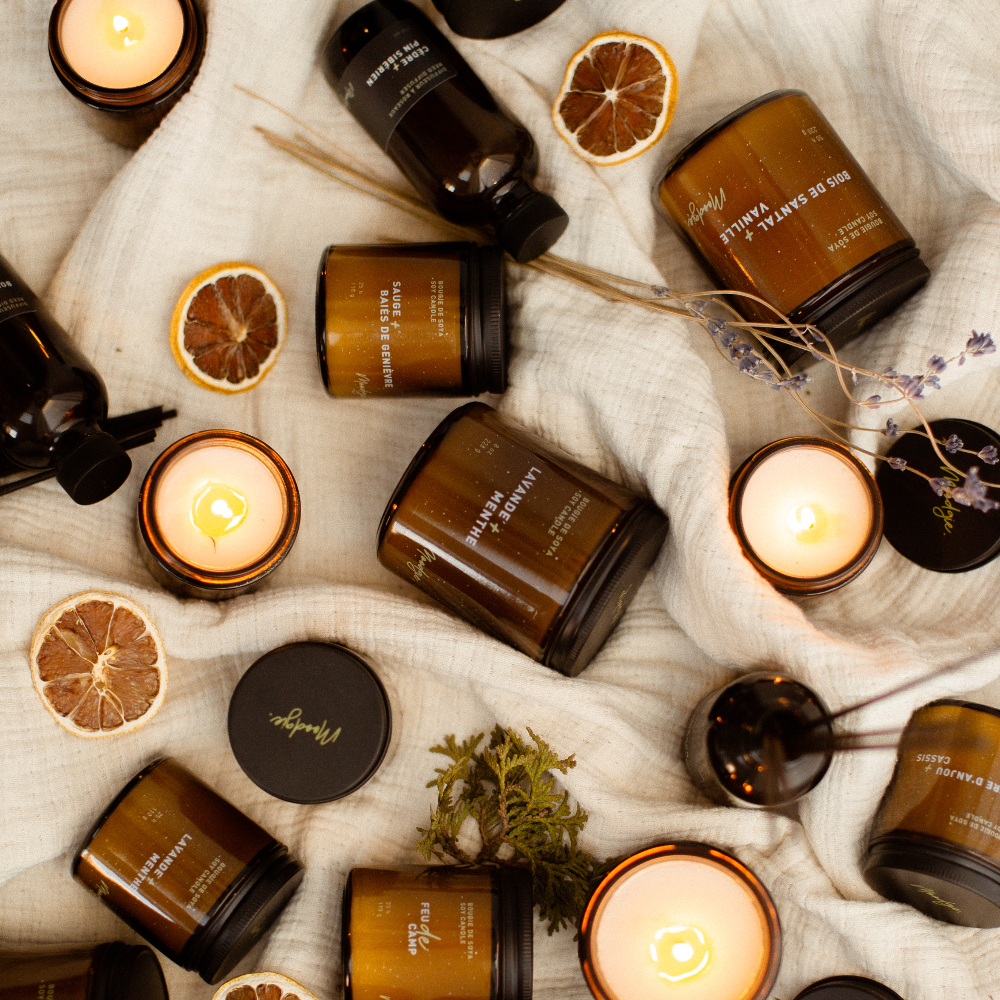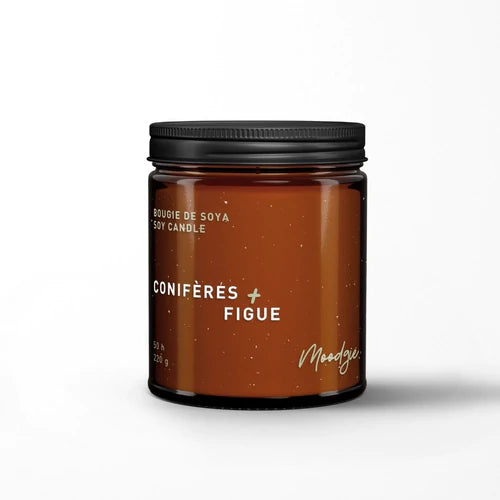I'm not even ashamed to say it: I really , really like candles!
Without knowing why, the last time I bought a candle, I looked at the ingredients. Then I saw that said candle was made of soy wax. " Ah good! ", I said to myself.
However, I didn’t stay on my “Ah good!” » . When I got home, I looked at the ingredients in my other candles and discovered the presence of paraffin, among other things.
Being curious by nature, I did some research to answer the question: what is harmful and what is not harmful to me in terms of candle wax? Any candle burns when burning, but where does this evaporating wax go, is it harmful when I breathe it all in? Why are the majority of my candles made of paraffin? In short, I had a thousand and one questions!
Wax
There are three types of wax that can be used in candle making. Mineral wax, animal wax and vegetable wax.
Mineral wax
Mineral wax, the most common of which is paraffin, is undoubtedly the most used wax. Far from being the best for health, paraffin is a petroleum derivative. And who says oil, says non-renewable material, therefore a resource that is not very ecological. Even though mineral wax candles are the least expensive, for our health (and especially that of our little ones), they are not the best options. Indeed, when burned, paraffin waxes can release volatile organic compounds (VOCs) into the air which are toxic. These include acetone, benzene and toluene, known carcinogens. A study by the University of South Florida even showed that paraffin wax candles emit low concentrations of benzene even when unlit. Definitely, their purchase should be carefully considered.
Animal wax
Animal wax, as its name suggests, is a wax derived from animal work, that of bees. Beeswax, also known as ceratite, is very natural and has a sweet smell if not deodorized.
Beeswax is also known to have benefits for people suffering from respiratory disorders. However, I would like to clarify that I am not a pulmonologist. However, with all the benefits of bee-derived products, I wouldn't be surprised if it was recommended.
Based on my knowledge and my latest research, this is the wax that will henceforth be my wax of choice when I purchase a candle. It is a so-called clean and vegan wax.
Typically, when we talk about vegetable wax, we mean coconut wax, soy wax, and even apricot wax. Who knew you could make wax with apricots! In addition to being made from natural, renewable and vegan ingredients, vegetable waxes have a clean and natural combustion. They therefore do not emit any toxic vapor when they burn.
And then after…
The wick:
There's not only wax in the candle, there's also the wick. The two most common shapes of wicks are cotton and wood.
The cotton wick is definitely the one found most often. On the other hand, it is important to pay attention to the origin of the cotton, in order to ensure that the cultivation is done in good conditions for workers and the environment. Hemp wicks are increasingly appearing on the market.
The wooden wick, for its part, requires greater attention than the cotton wick. You have to make sure you maintain it well. In return, it offers a pleasant crackle when burning! Once again, prioritize wicks whose wood is FSC certified, reassuring us about forest management.
Wick scissors:
I thought it was a fashion and not essential, until the wick of one of my candles almost shattered the glass container of it.
The instructions to follow on the candles are not just to look pretty! Obviously, there is some common sense, for example, not leaving a burning candle unattended. But we also find maintenance advice, such as cutting the wick to avoid an unfortunate accident. Indeed, it is essential to trim the wick of a candle before each lighting. On the one hand to avoid any drama, such as a container exploding or worse, a fire. Firefighters are very nice, but I prefer to see them in action in films than live from my living room.
Our candles made from natural wax currently available
Oli and Eve - from $12
Oli and Eve candles are made from 100% natural soy and coconut wax.
Fl Coconut wax - $38.00
As the name suggests, FL Cire de coco candles are made from natural coconut wax.
Tradition Candles - $17.20
The pillars of Chandelles Traditions are made entirely of certified sustainable, vegan and GMO-free palm wax.
So, it's time to stock up on natural candles, which in addition to smelling good, are good for you and the planet! I say it like that in passing, but there are plenty of them on the Signé Local store . Not only are they quality, but they are made here!

Revised by Rédaction MF
Cover photo: Moodgie









Leave a comment
This site is protected by hCaptcha and the hCaptcha Privacy Policy and Terms of Service apply.